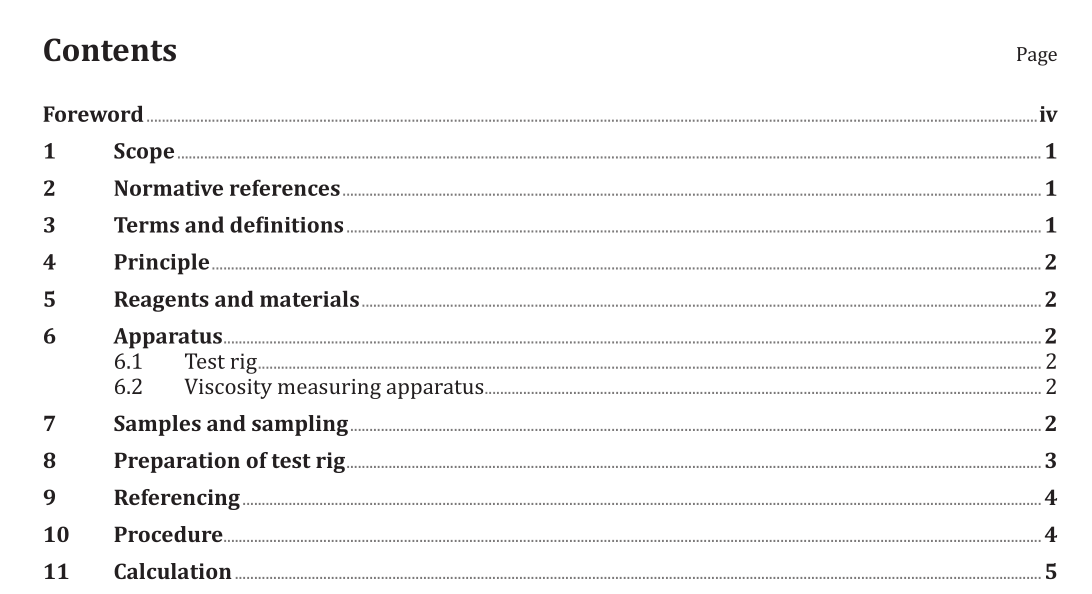ISO 20844:2015 pdf download.Petroleum and related products — Determination of the shear stability of polymer-containing oils using a diesel injector nozzle
8 Preparation of test rig
8.1 If a new nozzle is to be used, the opening pressure can be set by either static or dynamic means.
8.1.1 Static method, the opening pressure is determined and adjusted by means of an injector tester under near-static flow conditions. This entails removal of the nozzle holder assembly from the test rig. The fluid used for the adjustment shall be diesel injection calibration fluid satisfying the requirements of ISO 4113 3) . After adjustment and final testing, the nozzle shall be purged as fully as is practicable of residual quantities of the calibration fluid.
8.1.2 Dynamic method, dynamic adjustment of the nozzle opening pressure shall only be attempted during the warm-up run as described in 8.3 using CEC Reference Fluid RL 233. The rig shall be operational for at least 10 min to achieve a stable operating condition before the pressure is adjusted. The pressure value as indicated on the pressure gauge fitted to the test rig together with the flow rate should be compared to the values recorded for the preceding reference test which failed. Any significant difference between the values is indicative of a failure to achieve a stable operating condition. Adjustment of the opening pressure is achieved in the same manner as that employed in the static method except that it is conducted with the test rig in operation. Following adjustment of the nozzle opening pressure, the flow rate should be checked and adjusted as necessary. Both values should continue to be monitored throughout the remainder of the warm-up run to ensure a stable operating condition has been achieved. A reference test should then follow to re-validate the test rig. The opening pressure under dynamic conditions shall be between 13,0 MPa and 18,0 MPa.
8.2 Adjust the connecting pipe between the lower reservoir and the pump so that the dead volume between the stopcock and the outlet of the nozzle is 20 ml ± 0,5 ml.
8.3 Connect the cooling water to the cooling vessel and carry out three flushing runs with the material to be tested. Carry out the first two flushing runs with approximately 50 ml of fluid, and the third with approximately 170 ml. Once the test rig has warmed up during the flushing runs, adjust the cooling water rate to give a constant temperature of between 30 °C and 35 °C in the fluid in the lower reservoir.
ISO 20844:2015 pdf download
